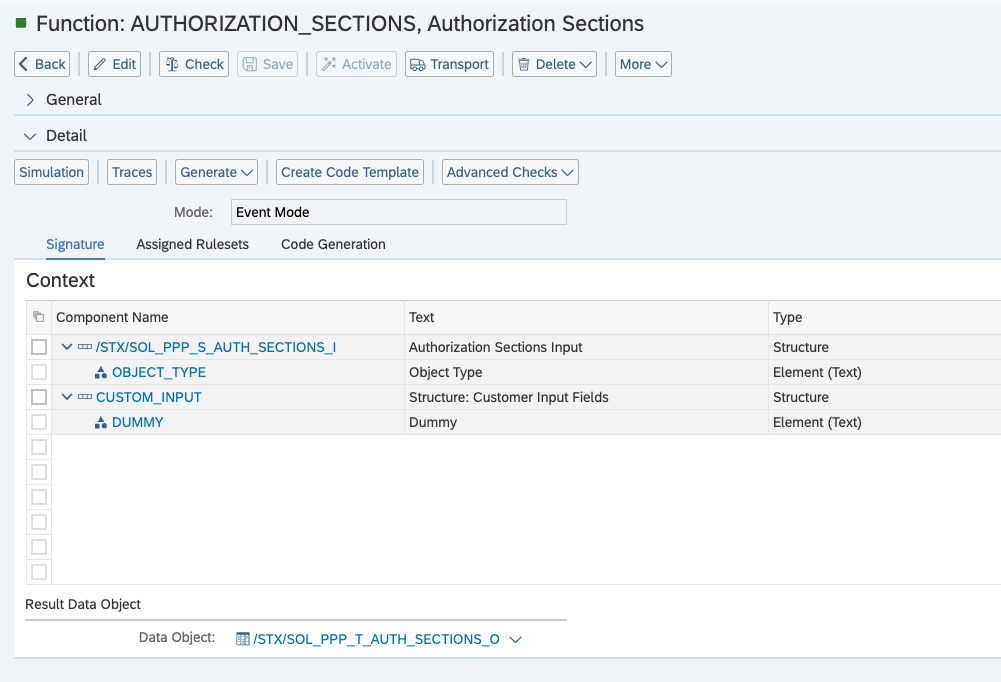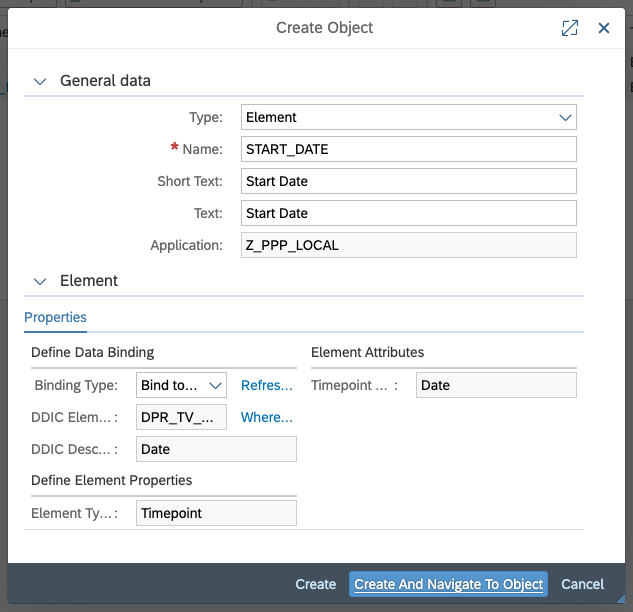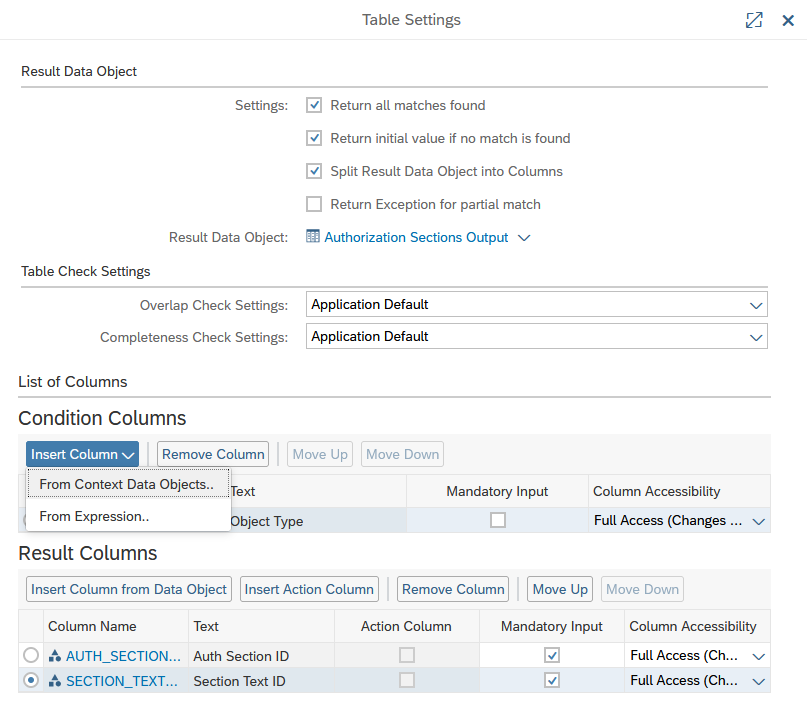BRF+ Functions
General Information
Decision tables, which we discussed in the previous part, can also be modified. You can add new columns to make them more precise, add new criteria for your data, and so on. This is done using Data Objects and Functions.
Functions define the possible fields of the decision tables. There are two types of Function components: /STX/SOL_PPP_… and CUSTOM_INPUT.
- /STX/SOL_PPP_… is a standard component that should not be changed in any function. This structure holds the technically required fields of the backend (e.g., Object Type). They also always have one Result Data Object.
- Some Functions also have the CUSTOM_INPUT Structure, which can be enhanced by a customer directly in BRF+. When you define new custom fields in the function, these fields can be added to the respective decision table.
Functions, Decision Tables, and Rulesets always have the same names, so the customer can easily see which belongs to which. Only the fields that are declared in the function can be used in the associated decision tables.

Thus, functions are the main entry point into the BRF+ processing in the backend.
How to modify a function
Add a new Data Object
This Data Object will be your customized field which you add to the decision table.
- Go to Data Object -> Structure -> CUSTOM_INPUT -> Add New Data Object.

-
You will be prompted with a popup where you first have to select the Type as Element.
- Enter the name of your field with the corresponding FIELD_ID of the “Basic Field Config” (Technical Name: BASIC_FIELD_CONFIGURATION) expression table.
- Choose a Binding Type. You can choose between No Binding and Binding to DDIC Element (Data Dictionary).

* When choosing No Binding, the desired Element Type and Element Attributes need to be entered. These need to fit the Type of the Origin Field Name in the "Basic Field Config".
* When choosing Binding to DDIC Element (_Data Dictionary_), you will be prompted with a value help for all existing DDIC Elements on your system. Simply choose the correct one and your Creation Popup will look like this:

- In both cases, click Create and afterwards activate your CUSTOM_INPUT structure. Ensure the “Include Referenced Objects” checkbox is marked and press Yes.

- The newly created fields are now available in all Expression Tables enhanceable with custom fields and can be selected within the Table Settings of your Expression Tables.
Change of Expression Table Columns
- Go to the Decision table you want to modify and press Edit.

-
Go to Table settings.
- Here, you can add or remove all available columns as necessary.

- Insert the column you created in Data Object in step 1.
Adjust how your new customized field works in Functions and Ruleset
-
If you are working within one application:
- Go to Functions and choose the one you modify (it has the same name as the Decision table you worked with in step 2).
- Among CUSTOM_INPUT, click on the element you added as Data Object and Column in the previous steps.
- Enter Edit mode and customize Properties and Domain Values of your new column.
-
If you work with multiple applications:
- The connection between applications works with assigning multiple rulesets to a single function. Rulesets of the new applications could be are included in the created functions automatically. For more detailed guide, please refer to Creation of Multiple Customer BRF+ Applications on One System
-
Assigned Rulesets Overview
-
You can find the assigned rulesets for a function directly within the function itself:
- Navigate to your function -> Assigned Rulesets.
- Click on a ruleset to view details, create new ones, or rearrange the ruleset priority and so on.
-

Here, you can see all the rulesets of a function ordered by their priority. The “top” ruleset is the one that gets evaluated first. You can also directly see if a ruleset is active, has preconditions, and other relevant information.
See also
Keywords
decision tables, condition columns, data objects, BRF+ applications, CUSTOM_INPUT